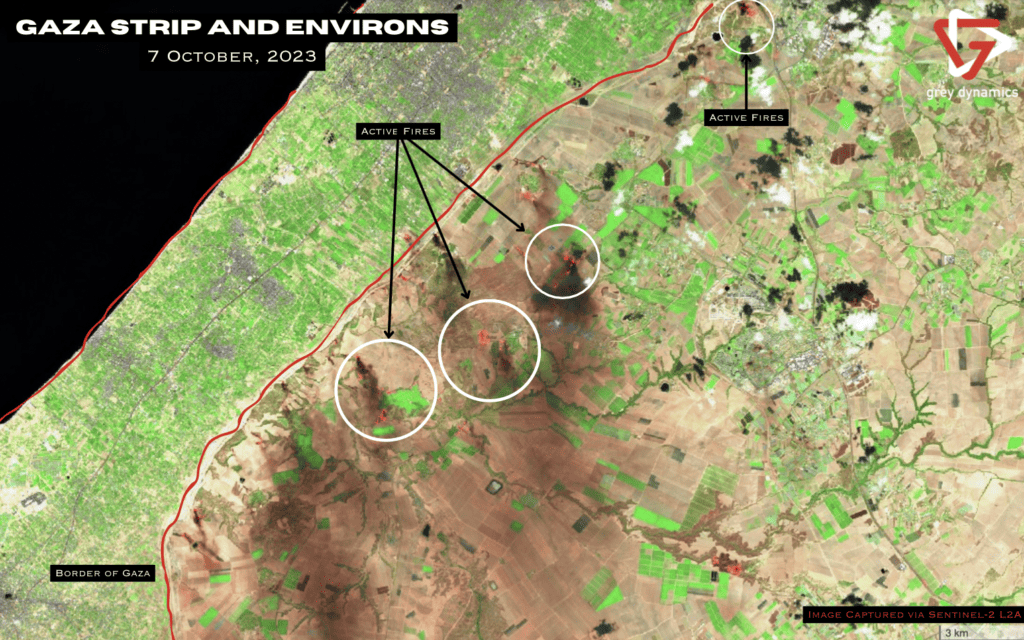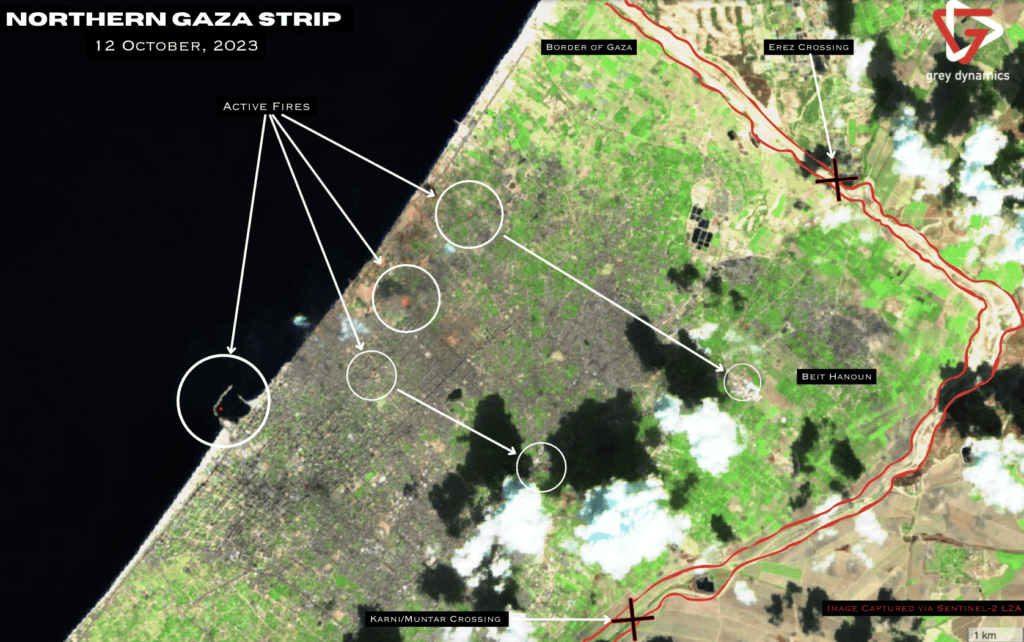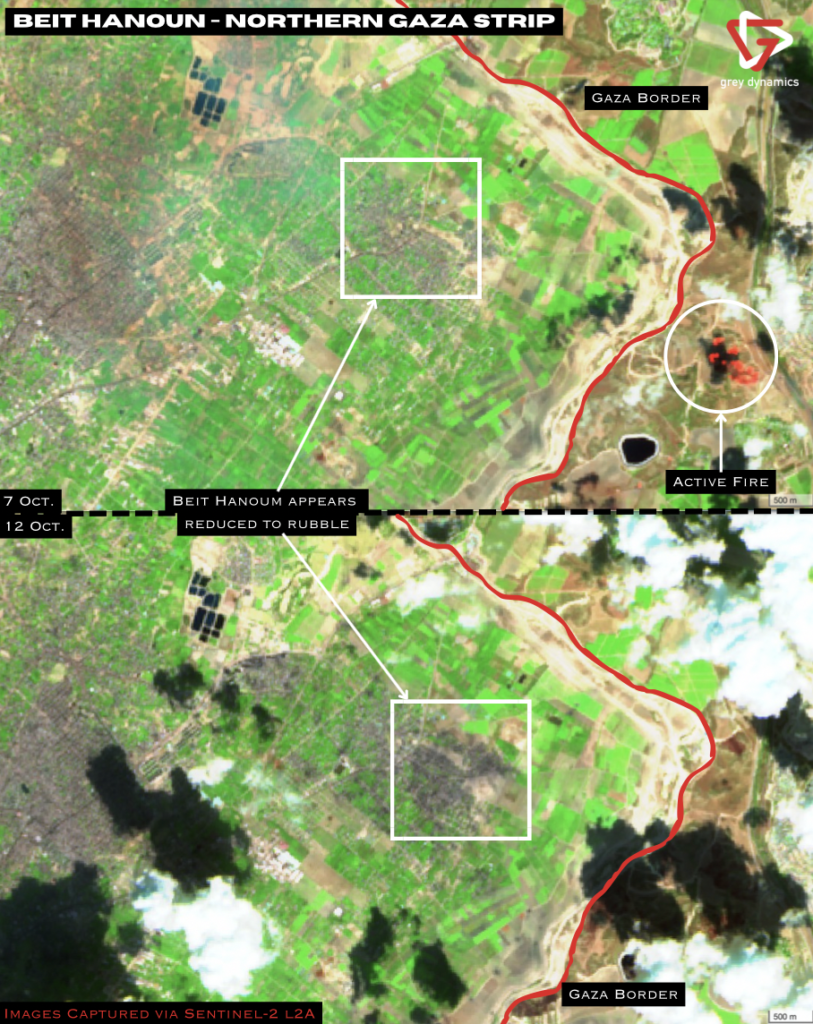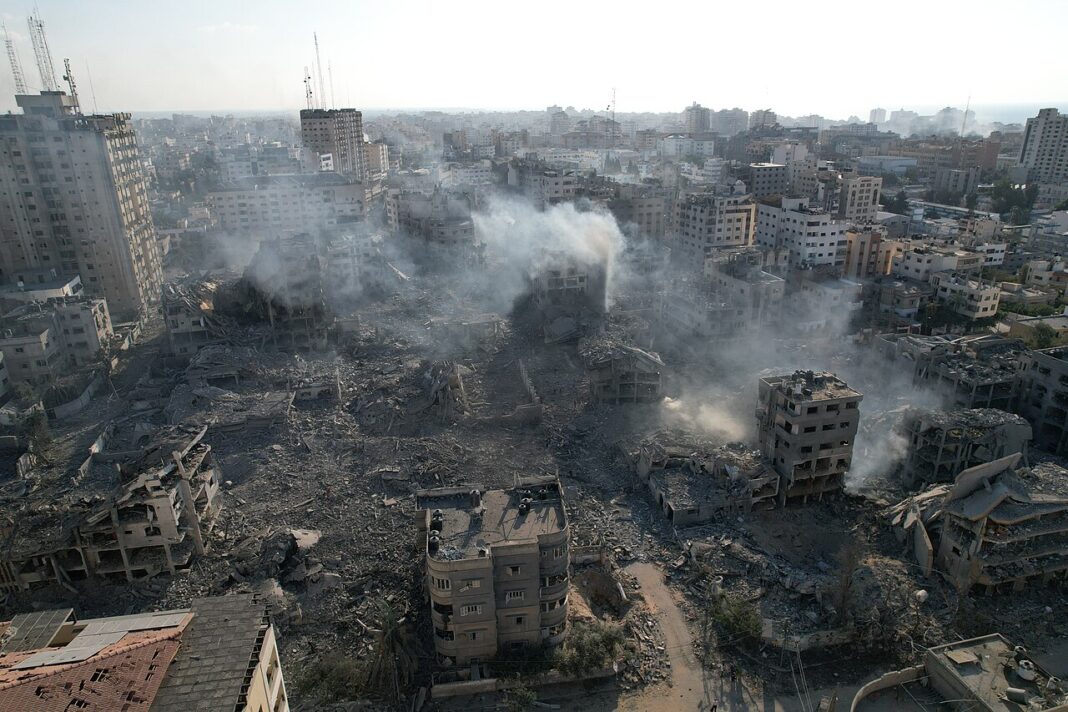Hamas launched an unprecedented attack against Israeli territory on 7 October that resulted in over 1,200 civilian casualties. Since then, Israel responded with a total blockade of the Gaza Strip. The IAF is conducting a general bombing campaign involving at least 2,000 casualties. The War in Gaza is the most severe escalation of fighting between Hamas and Israel at any point since the 1980’s. Both sides expect a long, hard struggle. However, the role of external forces remains unexamined. Iran, Russia, Syria, China and the United States have a stake and interest in how these events unfold.
Key Judgement-1: It is highly likely that Israel’s ground offensive will result in a humanitarian crisis, however, Egypt will likely keep the Rafah border crossing closed for refugees.
Key Judgement-2: It is highly likely that Hezbollah will increase its active participation in the conflict, resulting in direct Israeli actions against Hezbollah’s targets in Lebanon.
Key Judgement-3: It is likely that Iran materially supported the initial Hamas operation and will continue to do so over the next 3 months, precipitating direct Israeli actions against Iranian interests in Syria.
Key Judgement-1: It is highly likely that Israel’s ground offensive will result in a humanitarian crisis, however, Egypt will likely keep the Rafah border crossing closed.
a) The Rafah border crossing was to be open to clear out 1.1 million displaced Palestinians into Egypt. In addition, the UK threw its diplomatic weight behind the proposal [source], [source].
b) Satellite imagery appears to show heavy destruction around the northern border of the Gaza Strip on 7 October. This indicates that Hamas largely operates out of Beit Hanoun and Gaza City [see Fig. 1]
c) Satellite imagery indicates heavy Israeli shelling and airstrikes in the north of the Gaza Strip, indicating that the IDF intends to prioritize the pacification of Gaza City in the initial months of the invasion [see Fig. 2].
d) Imagery also indicates that the northernmost city of Beit Hanoun is almost completely levelled [see Fig. 3].
e) War in Gaza requires experience in urban warfare. The IDF is well-equipped for urban combat and special operations including hostage rescue. The IDF is set to launch a multi-pronged assault by land, air and sea [source].
f) Israel eliminated Merad Abu Merad, the Hamas air systems chief. Ali Qadi, a unit commander who led attacks in Israeli territory was assassinated as well [source].
g) Israel killed another Hamas commander, Billal Al Kedra in Gaza [source].
h) 300,000 reservists are on standby for the invasion. More modern military gear and kits are actively being sourced by private citizens for reservists who are lacking it [source].
i) Israel announced that it does not intend to allow the Rafah border crossing to open [source].
Name: Gaza Strip and its Environs
Location: 31°31’15.20″N, 34°28’30.79″E
Description: A Short Wave Infrared capture of northern Gaza showing the extent of Hamas operations in Israeli territory.

Name: Northern Gaza Strip
Location: 31°31’15.20″N, 34°28’30.79″E
Description: A SWIR capture showing the concentration of airstrikes and shelling in the north of the Gaza Strip.

Name: Beit Hanoun
Location: 31°31’15.20″N, 34°28’30.79″E
Description: A SWIR capture comparing the destruction during the war in Gaza at Beit Hanoun over the last week.

Key Judgement-2: It is highly likely that Hezbollah will increase its active participation in the conflict, resulting in direct Israeli actions against Hezbollah’s targets in Lebanon.
a) Hezbollah fired 5 ATGM missiles at IDF positions in northern Israel, prompting the IDF to create a 4km exclusion zone [source].
b) Israel conducted artillery strikes against Hezbollah positions in southern Lebanon [source].
c) Last April, following the murders of two Israeli women and Hezbollah rocket launches, the IAF launched wide-reaching airstrikes in Lebanon [source].
d) As of 15 October, 18:00 UTC, clashes between the IDF and insurgents in Lebanon are actively escalating in intensity.
e) The Lebanese faction of Hamas claimed responsibility for a barrage of rocket attacks against positions in northern Israel [source].
Key Judgement-3: It is likely that Iran materially supported the initial Hamas operation and will continue to do so over the next 3 months, precipitating direct Israeli actions against Iranian interests in Syria.
a) Beginning on 1 October, a Syrian Air Il-76TD (YK-ATD) flew to Tehran 3 separate times [source].
b) As far back as February, Syrian Air Il-76TD (YK-ATB) flew between Tehran and Damascus 14 separate times [source].
c) Starting in June of 2022, Syrian Air Il-76TD (YK-ATA) flew between Tehran and Damascus 11 separate times [source].
d) Syrian Air previously used Aleppo Airport as its main hub of operations. This March, the IAF destroyed an arms depot at Aleppo Airport [source].
e) In 2012, Turkish jets forced down a Syrian Air A320 with over 600 lbs. of Russian-made military equipment onboard [source].
f) The Iranian Foreign Minister met with the leader of Hamas in Doha on 14 October [source].
g) Both men announced that Iran and Hamas would “continue” and deepen the level of cooperation between Tehran and Hamas [source].
h) Accordingly, IRCG fighters redeployed from Deir-ez Zor towards the Syrian border with Israel [source].
i) IRCG officials met with Hamas representatives in Beirut and green-lit the Hamas operation. The IRCG also helped plan the attack [source].
Analytical Summary
We have a high level of confidence in our assessment that the IDF will largely achieve its aims in Gaza. The Israeli military is far better equipped and placed to conduct urban warfare compared to Hamas. However, Hamas should not be underestimated. It clearly has a home-field advantage in Gaza. Hamas maintains extensive tunnel networks and has likely set traps, explosive devices and hardened posts across the enclave. A war in Gaza will be costly and brutal and will almost certainly go on for at least several months. Whether or not Israel intends to “own” the Gaza Strip in the same way it “owns” the Golan Heights is open to debate. The concentration of air and artillery strikes in the north of Gaza certainly indicates that Israel is softening the terrain before committing any significant ground forces to the area.
Hezbollah and Lebanon
We have a lower degree of confidence in our assessment that Hezbollah will actively participate in the conflict in such a fashion that would compel Israel to conduct large-scale offensives in southern Lebanon. Israel’s experience in Lebanon back in 2006 was less than spectacular. Instead of suppressing the threat is Hezbollah rocket attacks, Hezbollah in fact increased the rate at which it launched rockets into Israel. Despite the high casualty ratio between Hezbollah and the IDF in 2006, Hezbollah never fully left Southern Lebanon. Tel Aviv may potentially lack the appetite for a repeat of 2006, yet the exact attitude the Israeli government has towards this remains unknown at the present moment. The War in Gaza appears to be taking priority.
Syria and Iran
Syria and Iran have an extensive and long history of supporting Hezbollah and Hamas. The fact that the Iranian Foreign Minister publicly met with Hamas leadership in Doha clearly shows solidarity and enduring support. Qatari support for Hamas was initially incidental and political. Since the advent of the attack on Israel, Qatar and the US reportedly agreed to withhold $6 billion worth of oil revenue earmarked for Iran. This would indicate that the US believes the funds could be directed, to some extent, to Hamas.
Iran has reportedly given nearly $70 million worth of aid to Hamas, and the history of Syrian Air flights carrying weapons from Russia and Iran points to continued efforts to set up an air bridge between Tehran and Damascus. The IRCG appears to be mobilizing towards the Golan Heights and had at least a foreknowledge of the attack on 7 October. Israel will feel compelled to respond to this and in the absence of strikes on the Iranian homeland, will almost certainly target Iranian interests in Syria and Lebanon.
INTELLIGENCE CUT-OFF DATE: 17 October, 2023

